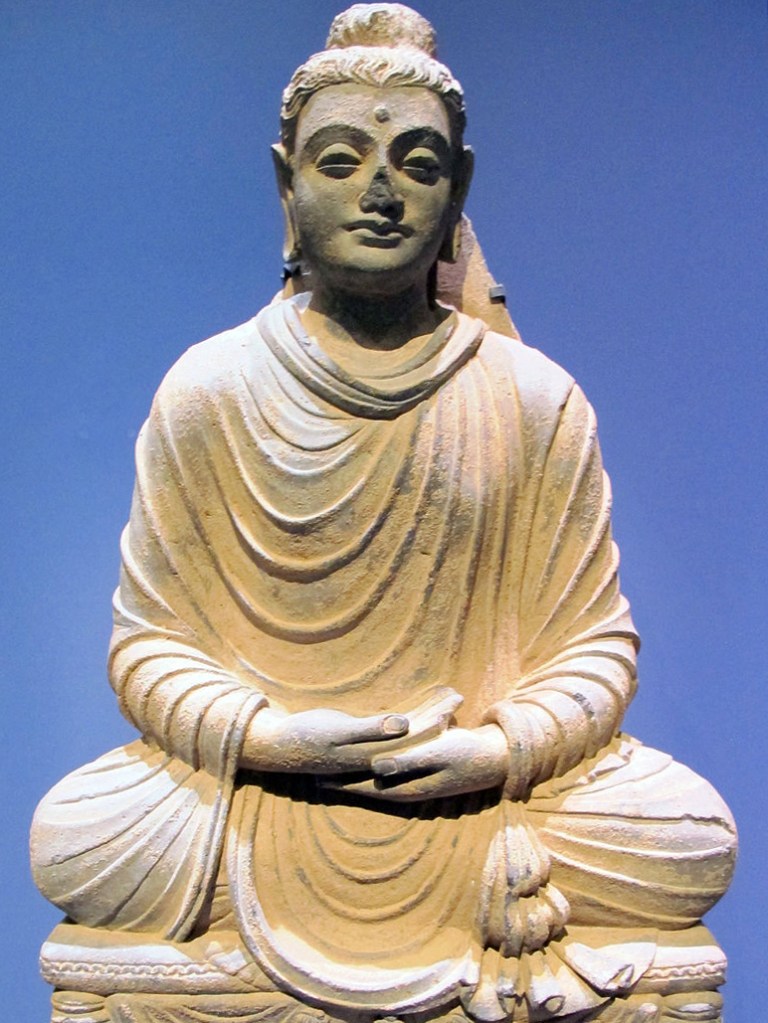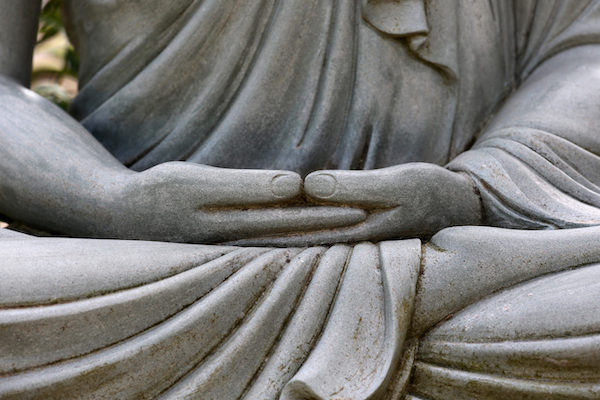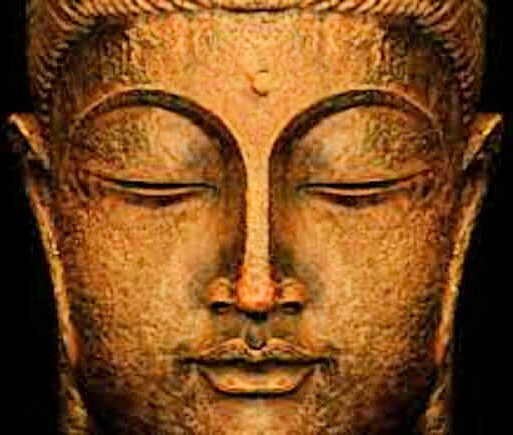POSTCARD#472: As the stillness of the knower calms that which is known, the bliss that was the central feature of the first three jhānas changes again when one enters the fourth jhāna. Only this time it changes more radically. Sukha completely disappears. What remains is an absolute still knower, seeing absolute stillness.
From the perspective of the fourth jhāna, the bliss of the previous jhāna as a residual movement of the mental object, and an affliction obscuring something much greater. When the bliss subsides, all that is left is the profound peace that is the hallmark of the fourth jhāna. Nothing moves in here, nothing glows. Nothing experiences happiness or discomfort. One feels perfect balance in the very center of the mind. As in the center of a cyclone, nothing stirs in the center of the mind’s eye. There is a sense of perfection here, a perfection of stillness and of awareness. The Buddha described it as the purification of mindfulness, just looking on (upekkhā sati pārisuddhi) (DN 9,13).
The peace of the fourth jhāna is like no other peace to be found in the world. It can only be known having passed though the experience of the previous three jhānas. That passage is the only way of later confirming that the unmoving peace that one felt was indeed that of fourth jhāna. Furthermore, the state of fourth jhāna is so very still that one remains on its plateau for many hours. It seems impossible that one could experience the fourth jhāna for any less time.
Though pīti and sukha have both ceased in the fourth jhāna and all that is left is the perfection of peace, such an experience is later recognized, upon reviewing, as supremely delightful. The perfect peace of the fourth jhāna is seen as the best bliss so far. It is the bliss of no more bliss! This is not playing with words, trying to sound clever and mystical. This is how it is.
Summary of the Fourth Jhāna
Thus the fourth jhāna has the following features:
1. The disappearance of sukha;
2. An extremely long-lasting, and unchanging, perception of the perfection of peace, reached only through the lower three jhānas;
3. The same absolute rocklike stillness, and absence of a doer, as in the second and third jhāna;
4. The complete inaccessibility from the world of the five senses and one’s body.
The Buddha’s Similes for the Four Jhānas
The Buddha would often describe the experience within the four jhanas by evocative similes (e.g.; MN 39,15-18;77, 25-28). Before explaining these similes, it is helpful to pause and clarify the meaning of kāya, a key Pāli word used in all the similes. Kāya has the same range of meanings as the English word “body.” Just as “body” can mean things other than the body of a person, such as a “body of evidence,” for example, so too kāya can mean things other than a physical body, such as a body of mental factors, nāma-kāya (DN 15,20). In the jhānas the five senses do not operate, which means that there is no experience of a physical body. The body has been transcended. Therefore, when the Buddha states in these four similes, “so that there is no part of his whole kāya unpervaded (by bliss and so on),” this can be taken to mean “so that there is no part of his whole mental body of experience unpervaded” (MN 39,16). This point is frequently misunderstood.
The Buddha’s simile for the first jhāna is a ball of clay (used as soap) with just the right amount of moisture, neither too dry nor too wet. The ball of clay stands for the unified mind, wherein mindfulness has been restricted to the very small area created by the “wobble.” The moisture stands for the bliss caused by total seclusion from the world of the five senses. The moisture that completely pervades the clay ball indicates the bliss that thoroughly pervades the space and duration of the mental experience. This
is later recognized as bliss followed by bliss, and then more bliss, without interruption. That the moisture is not in excess, and so does not leak out, describes how the bliss is always contained in the space generated by the wobble, never leaking out of this area of mind-space into the world of the five senses, as long as the jhāna persists.
The second jhāna is likened to a lake with no external entry for water but with an internal spring that replenishes it with cool water. The lake represents the mind. The complete absence of any way that water from outside can enter the lake describes the inaccessibility of the mind by any influence from outside. Not even the doer can enter such a mind in this jhāna. Such hermetic inaccessibility is the cause of the rocklike stillness of the second jhāna. The internal spring that supplies the cool water represents ajjhattam sampasādanam, the internal confidence in the bliss of second jhāna. This internal confidence causes complete letting go, cooling the mind into stillness and freeing it from all movement. The coolness stands for the bliss itself, born of samādhi or stillness, which pervades the whole mental experience, unchanging throughout the duration of the jhāna.
The third jhāna is described by the metaphor of a lotus flower that thrives immersed in the cool water of a lake. The lotus represents the mind in the third jhāna. Water can cool the petals and leaves of a lotus but can never penetrate the lotus, since all water rolls off. The coolness stands for sukha, and the wetness stands for pīti. So like the lotus immersed in water, the
mind in the third jhāna is cooled by sukha but is not penetrated by pīti. The mind in the third jhāna experiences only sukha. In the third jhāna, the mind continues to experience a rocklike stillness, never moving outside, just as the lotus in the simile always remains immersed within the water. Just as the cool water causes the lotus to thrive, so the bliss of the third jhāna sustains the mind therein. Once again, just as the cool waters in the simile pervade the lotus with coolness from its roots to its tips, so the unique bliss of the third jhāna pervades the whole mental experience from beginning to end.
The fourth jhāna is likened to a man draped from head to toe in a clean white cloth. The man represents the mind, while the cloth represents the perfect purity of equanimity and mindfulness that is the hallmark of the fourth jhāna. The mind in the fourth jhāna is stainless, spotless as a clean cloth, perfectly still and just looking on, purely and simply. This absolute purity of peacefulness pervades the whole body of mental experience, from the start to the end, just as the white cloth completely covers the man’s body from head to toe.
Such is the meaning of the four similes for jhāna, as I (the author) understands them.










You must be logged in to post a comment.